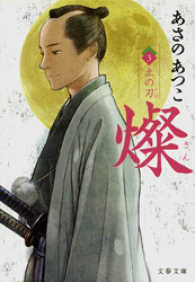- ホーム
- > 洋書
- > ドイツ書
- > Humanities, Arts & Music
- > Music
- > musical equipment
Description
(Text)
Wie viele Komponisten seiner Zeit war auch Robert Schumann fasziniert von der Gestalt des "Zaubergeigers" Nicolò Paganini. Als er in den Jahren 1832/33 eine Klavierschule plante, die sowohl eigene als auch fremde Stücke enthalten sollte, setzte er sich intensiv mit Paganinis virtuosen Violin-Capricen auseinander. In diesem Geist entstanden Schumanns eigene Capricen op. 3, die sich sehr eng und in pädagogischer Absicht an das Original Paganinis anlehnen. Opus 10 geht dagegen freier mit der Vorlage um und ist stärker im Hinblick auf eine effektvolle Aufführung konzipiert. Unsere Urtextausgabe sämtlicher Paganini-Etüden wird ergänzt durch eine umfangreiche Erläuterung des Komponisten zur Ausführung, die dieser seinem Opus 3 voranstellte._
(Table of content)
Paganini-Etüden op. 3Caprice op. 3,1Caprice op. 3,2Caprice op. 3,3Caprice op. 3,4Caprice op. 3,5Caprice op. 3,6Paganini-Etüden op. 10Etüde op. 10,1Etüde op. 10,2Etüde op. 10,3Etüde op. 10,4Etüde op. 10,5Etüde op. 10,6
(Text)
Robert Schumann was fascinated by the violin virtuoso Nicolò Paganini, as were many composers of the time. When he was planning a piano tutor in 1832/33 that was to include his own works as well as those by others, Schumann took a close look at Paganini's virtuosic Caprices for violin.
Schumann's own Caprices op. 3 were composed in this spirit, based very closely on Paganini's original and following their educational intention. Opus 10, on the other hand, deals more freely with the model and is designed more with an effective performance in mind. Our Urtext edition of all of the Paganini Studies is supplemented by the composer's extensive explanation on their execution, which he placed at the beginning of his Opus 3._
(Table of content)
Paganini-Studies op. 3Caprice op. 3,1Caprice op. 3,2Caprice op. 3,3Caprice op. 3,4Caprice op. 3,5Caprice op. 3,6Paganini-Studies op. 10Etude op. 10,1Etude op. 10,2Etude op. 10,3Etude op. 10,4Etude op. 10,5Etude op. 10,6
Comme nombre des compositeurs de son temps, Robert Schumann était lui aussi fasciné par le personnage de Nicolò Paganini, le «magicien du violon». Lorsque dans les années 1832/33 il projette une méthode de piano devant inclure aussi bien ses propres morceaux que des morceaux d'autrui, il étudie intensivement les Caprices virtuoses pour violon de Paganini. C'est dans cet esprit que sont composés les propres Caprices op. 3 de Schumann, lesquels suivent étroitement, aussi dans une intention pédagogique, l'original de Paganini. L'opus 10 par contre se libère plus du modèle, étant conçu plus fortement en vue de l'effet produit lors de l'exécution. Notre édition Urtext de l'ensemble des études est complétée par un commentaire détaillé du compositeur sur l'exécution, introduisant son opus 3._
-

- 電子書籍
- 燦 〈3〉



